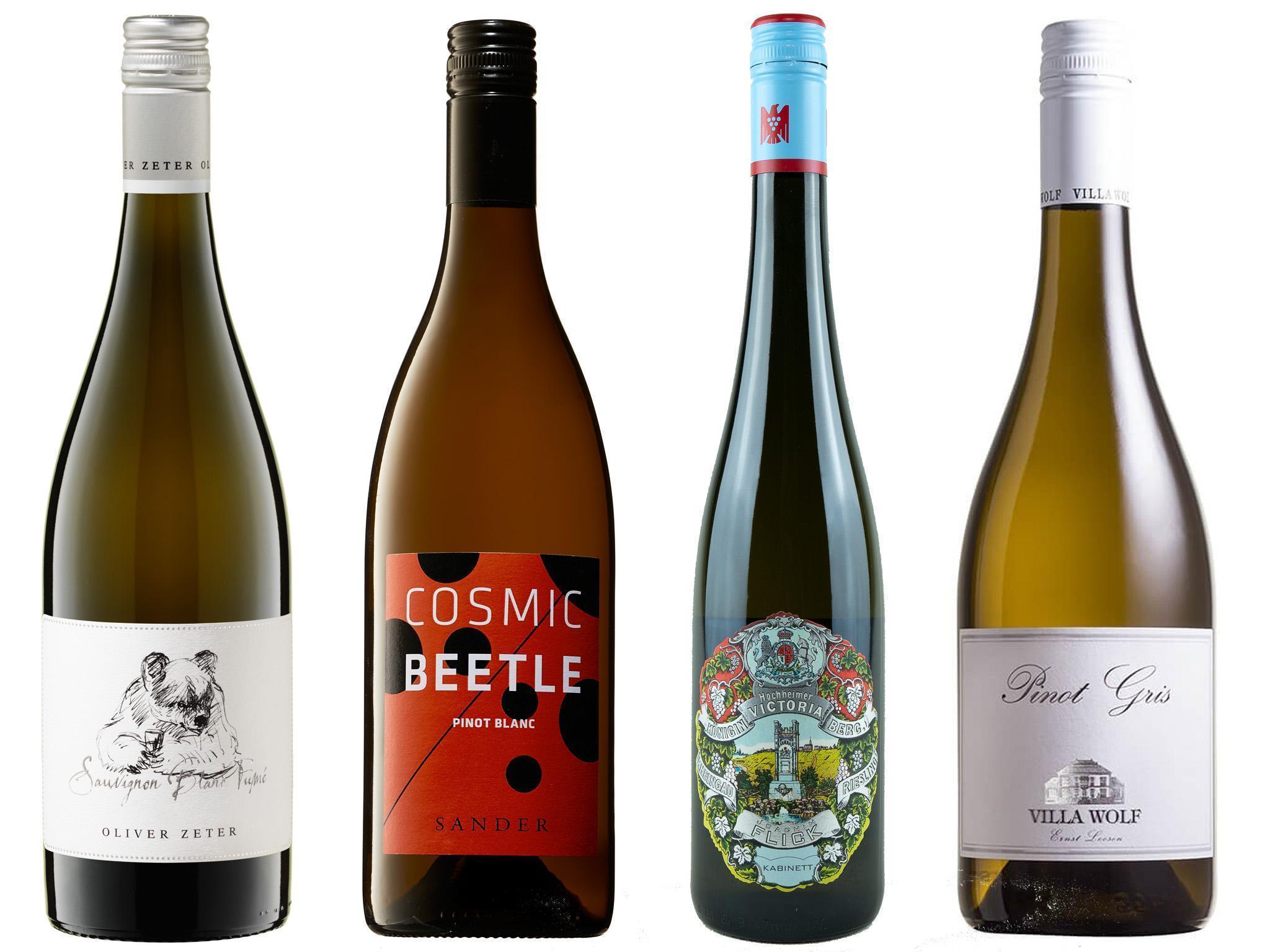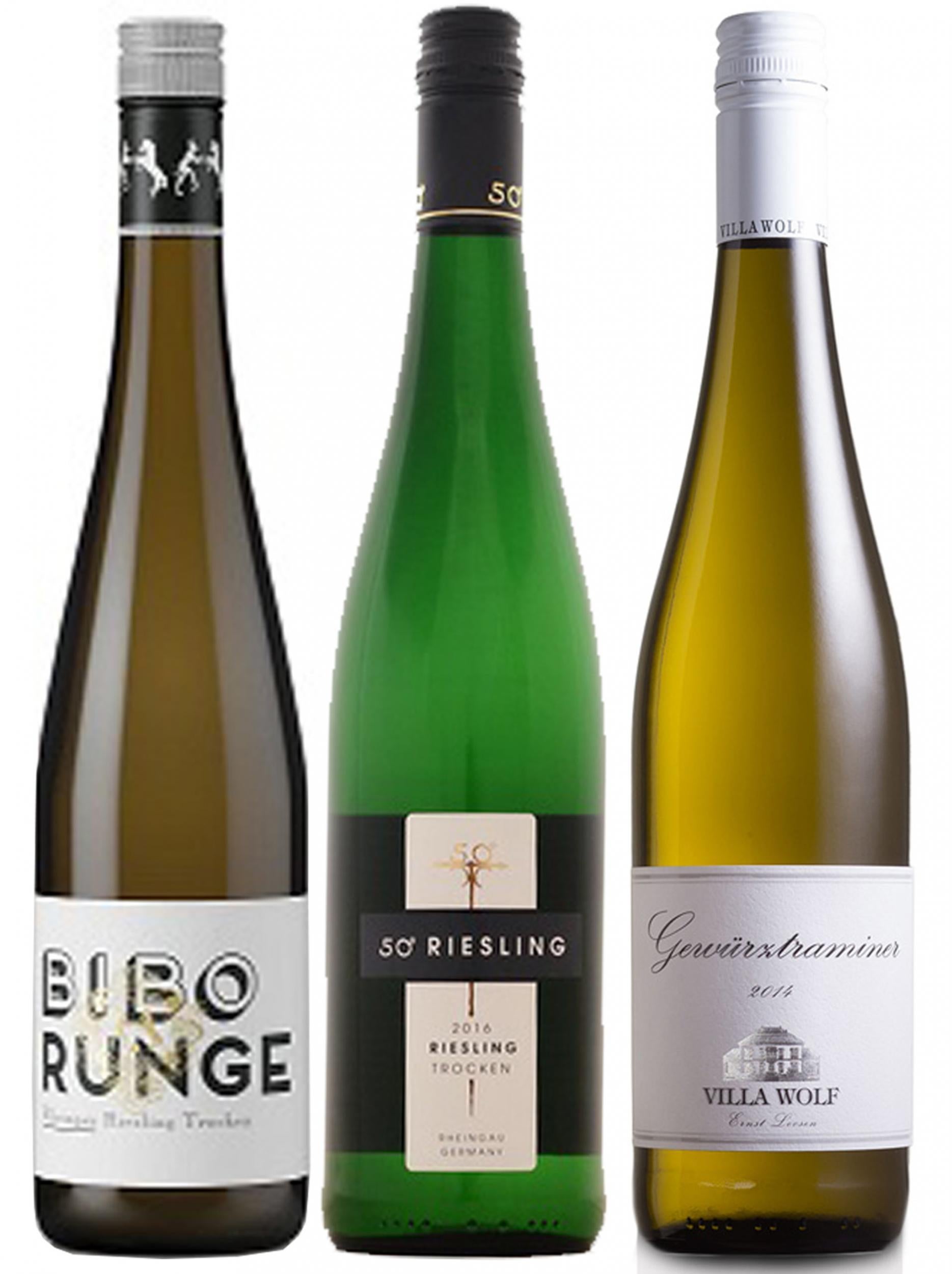The Independent's journalism is supported by our readers. When you purchase through links on our site, we may earn commission.
Wines of the week: Seven German whites to drink now
Forget Blue Nun from the Sixties: things have come a long way since then, says Terry Kirby. But the country is still good at making riesling

Once, German white wines had a major role in wine-drinking in the UK. “Hock” as it was generically called – the name allegedly deriving from the town of Hocknheim in the Rheingau wine-growing area – was the white wine of choice for many by Victorian times, challenging the popularity of white bordeaux and burgundy.
The wines themselves were usually semi-sweet or off-dry rieslings or riesling-based blends, and when vine-growing was revived in the UK in the 1950s and 1960s, it was German grapes that were planted in the belief those grapes were best suited to both the British climate and palate.
And, of course, many of us remember the bizarre domestic popularity of Blue Nun during the 1960s and 1970s, the brand for a particular type of liebfraumilch, a semi-sweet blend of riesling and other grapes.
Both the UK and Germany have come a long way since then. UK consumers have become much more sophisticated and German winemaking has moved on from producing those slightly heavy semi-sweet wines.
Despite this, German wines struggle to find a big foothold in the competitive UK high street, partially due to unfamiliar labelling and a lack of knowledge of the different wine regions. Online retailers have more exciting selections, but it all still pales by comparison to the strength of the rest of Europe and the New World.
Which is a shame, because there is much to discover out there if consumers are prepared to put their prejudices behind them.
Firstly, three excellent rieslings, just to prove the Germans are still capable of what they have always done best: the Bibo Runge Dry Riesling Trocken (£17.99 novelwines.co.uk) comes from the aforementioned Rheingau and is aromatic on the nose with the distinctive “petrol” quality of great riesling; dry and full of bracing acidity on the palate, with lingering flavours of peaches and apricots.
There is considerable heft and presence: drink with all kind of fish, particularly salmon or tuna and hard cheeses. Also from the Rheingau is the quite different 50 Degrees Riesling Trocken 2017 (£10.95 slurp.co.uk), named after the 50th parallel north which runs through the region and marks the most northerly limit of viticulture – although there are some vineyards north of that that might challenge the assumption – and is light, crisp, dry and packed with intense green apple and citrus flavours and a grassy, sauvignon blanc-style vibrancy about it. A wonderful aperitif: warm day, after work, garden optional, etc.

Fuller and fruitier is the Riesling Kabinett, Konigin Victoriaberg, Flick 2018 (£19.99 thewineryuk.com) which has one of the most lovely labels I’ve seen in a long while – a tribute to Queen Victoria who once visited Hocknheim. The wine is made from what was once said to have been her favourite vineyard; if this is even remotely like the wines she enjoyed, perhaps it is possible to see what all the 19th century fuss was about – there’s a beguiling slight smokiness among the fruits and a leavening zestiness. Quite enticing and, again, a lovely aperitif, but also excellent with lighter white-meat dishes.
But modern German winemaking is not all about riesling. Pinot blanc, that relative of pinot grigio, has long been popular in Germany where it is known as weissburgunder and produces fuller flavoured, slightly less acidic wines, with rounded flavours of pear and orchard fruits.
The Cosmic Beetle Pinot Blanc Rheinhessen 2018 (£10.99 vinceremos.co.uk) has some honeyed and spice notes. Complex and interesting and ideal with all kinds of shellfish.
Pinot gris is the name given to pinot grigio grapes left on the vine longer to achieve a more mature, fuller bodied, almost savoury texture to the wine; usually the practice in Alsace and Germany, where it is known as grauburgunder.
The Villa Wolf Pinot Gris Ernst Loosen Pfalz 2017 (£10.95 slurp.co.uk, £11.50 tanners-wines.co.uk), coming from an ancient estate now under the wing of one of the biggest names in German winemaking, is a great introduction to the style, with long-lasting tropical fruits, some spice and smoke. As I noted last week, the aromatic, spicy gewurztraminer grape originated in the German-speaking area of South Tyrol, but today is more popular in the Alsace region of France, although some GW is made in Germany. Also from Villa Wolf, the Villa Wolf Gewurztraminer Pfalz 2018 (£9.95 slurp.co.uk) is in the off-dry style, but brilliant with Asian foods and strong cheeses.
All these grapes are characteristic of the Alsace/German style, but sauvignon blanc? Yup, the Oliver Zeter Sauvignon Blanc Fumé, Pfalz 2017 (£21.99 novelwines.co.uk; £23.50 oxfordwine.co.uk) is packed with citrus, gooseberry, passion fruit and green herb flavours, with the complex “fume” notes deriving from fermentation in oak barrels. If you like Kiwi sauvignon, but prefer something a bit more rounded and richer, then try this. And about as far removed from traditional “hock” as you can go...
Join our commenting forum
Join thought-provoking conversations, follow other Independent readers and see their replies
Comments
Bookmark popover
Removed from bookmarks